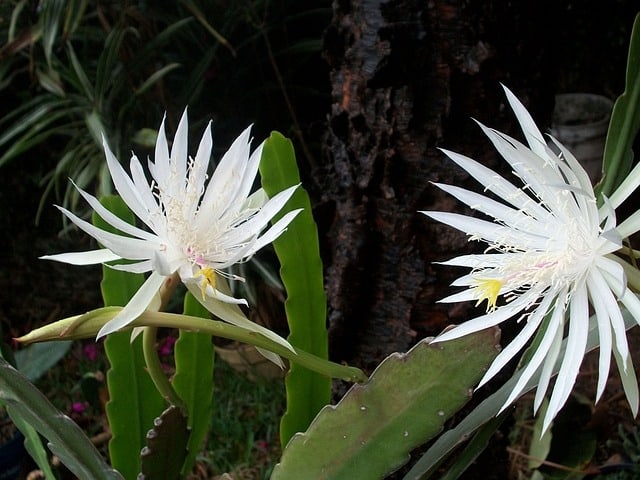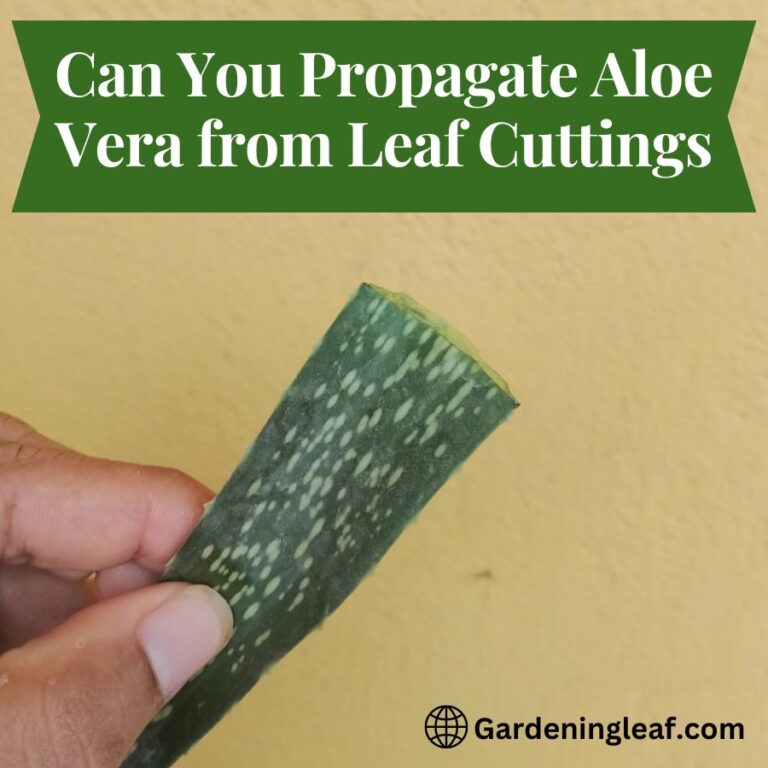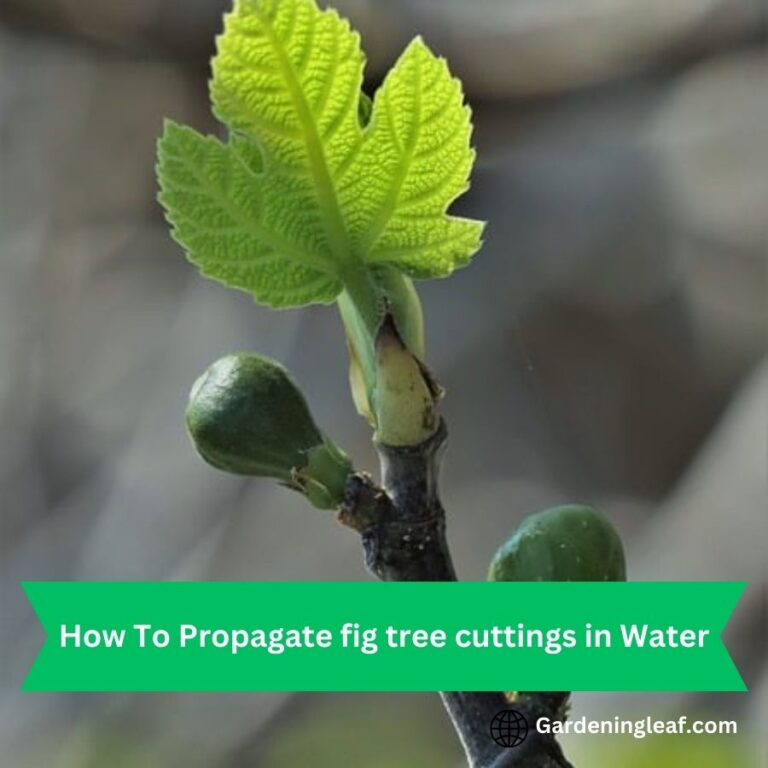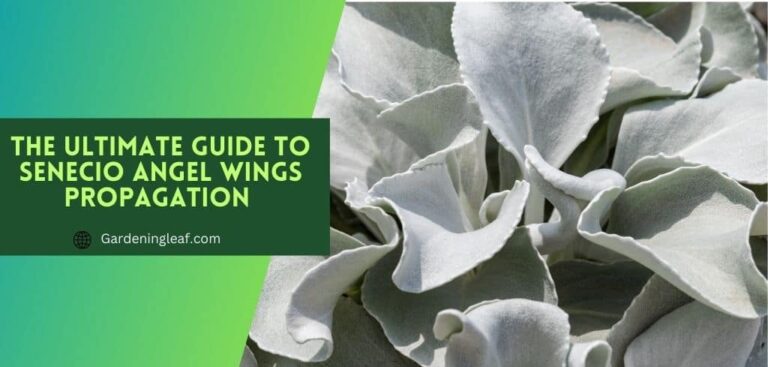Unlock the Secrets Propagation of Night Blooming Cereus
Night Blooming Cereus is a stunning houseplant. That captivates with its large, fragrant flowers that bloom only at night. If you want to propagate this enchanting beauty and expand your collection. This comprehensive guide will help you.
Night blooming cereus propagation can be done through different methods, such as stem cuttings, grafting, or seed harvesting.
Understanding the Night Blooming Cereus

The night-blooming cereus, called Epiphyllum oxypetalum, originates from Central and South America.
It is called the “Queen of the Night” due to its stunning flowers that bloom only during nighttime. The plant features long, flat stems with thorny edges, and its flowers are large, fragrant, and usually white or pale yellow.
Its flowers open after sunset and close before the morning sun. This nocturnal pattern adds an element of mystery and allure to the plant.
They bloom at night because they rely on moths and bats for pollination, and a white, fragrant flower in the darkness is highly appealing to them. The flowers open rapidly and are extremely fragrant. If they attract the pollinating moth, they will develop red fruit in the fall. The flowers only last for one day.
Flowering starts when the plant is mature, typically around 4 or 5 Years. The flowering period for these plants occurs from July to October, which coincides with the hottest months of the year.
Different Night Blooming Cereus Propagation Methods
Night-blooming cereus can be propagated using various methods. Let’s have a look at some of the most often-used strategies:
Stem Cuttings
One of the simplest methods for Night blooming cereus propagation cereus is through stem cuttings.
- Start by choosing a 6-inch long stem that is in good health.
- Use a sharp knife or garden shears to cut just below a leaf node. Take off any lower leaves to reveal the node.
- Next, allow the cereus cuttings to dry and callus for a few days. This prevents rotting when planted. After calloused, dip the cut end in rooting hormone powder to speed up root formation.
- Create a potting soil that drains well by combining equal quantities of perlite, peat moss, and coarse sand. or use soil for cactus and succulents.
- In the potting mixture, create a small hole. After that, place the bottom end of the cutting so that at least two nodes are covered below the surface.
- Water the cutting sparingly, ensuring the soil remains moist but not wet.
- Put the pot in a warm and bright area, but keep it out of the direct sunshine.
- Mist the cutting occasionally to increase humidity and promote successful rooting.
- Within a few weeks, fresh growth is expected to become visible at the top of the stem cutting. This is a sign that roots have developed. Slowly acclimate the new plant to more sunlight and increase the watering frequency.
Grafting
Grafting is another technique that can be used for Night blooming cereus propagation. This method works well to preserve specific traits or create unique combinations. Here’s a basic grafting process:

- Select a healthy rootstock plant with a robust root system
- Create a slanted incision on the rootstock and scion, ensuring the cuts align perfectly.
- Join the two pieces together, aligning the cambium layers.
- Secure the graft union with grafting tape or a clip to hold them in place.
- Place the grafted plant in a warm, humid environment, such as a propagator or a plastic bag.
- Make sure to keep the graft moist and give it indirect sunlight.
- Over time, the graft will fuse, and new growth will appear.
Division
The division is an alternative technique that can be used for propagating Night-blooming cereus. The method divides the plant into multiple sections containing roots and stems. Here’s how you can divide :
- Remove the parent plant from its container as carefully as possible.
- To separate the clumps, gently pull on the roots in opposite directions.
- Make sure each divided section has healthy roots and stems.
- Plant each division in a separate container filled with well-draining soil.
- Water thoroughly and place them in a spot that receives bright, indirect light.
- Maintain regular watering and provide appropriate care as the divisions establish themselves.
Seeds
Night-blooming cereus can also be grown from seeds, although this method requires more patience. Here are the steps to follow:
- Collect mature seeds from the parent plant.
- Place the seeds in warm water to soften the hard seed coat and allow them to soak for 24 hours.
- Mix peat moss and perlite in similar ratios to create a seed-starting mix.
- Lightly press the seeds onto the soil. and cover it with soil
- Maintain the soil’s moisture and warmth at a temperature range of 70-80°F (21-27°C).
- Position the seed tray in an area that receives indirect light.
- Germination can take anywhere from a few weeks to several months.
When it comes to propagating Night blooming cereus, you have the freedom to select the most suitable method based on your personal preferences.
But division is a simple process that can be done relatively quickly. Meanwhile, seed propagation requires more time and patience. The choice depends on your preferences and the specific needs of the plant you are propagating.
Necessary Tools and Materials
To successfully propagate night-blooming cereus, gather the following tools and materials:

- Sharp, clean knife or pruning shears for stem cuttings and grafting
- Potting mix containing perlite, peat moss, and sand for planting cuttings
- Grafting tape or clips for securing graft unions
- Plant containers with drainage holes for divisions and potted cuttings
- Use a seed-starting mix of peat moss and perlite for seed growth.
- Warm water for soaking seeds
- Propagator or plastic bag for creating a humid environment during grafting
- Watering can or spray bottle for watering plants.
- The indirect light source or grow lights for providing appropriate lighting conditions
Caring for Newly Propagated Plants
After propagating night blooming cereus using your chosen method. Caring for the propagated plants is crucial. Here are some essential care tips:
Proper Watering Techniques
It requires very little water, so water it carefully. To ensure healthy plants, distribute moisture in the root zone. Avoid spraying water on leaves or flowers to prevent damage and fungal growth.
Ideal Soil Conditions
In order to promote ideal growth, it is important to give them the appropriate soil. Mix equal quantities of perlite, peat moss, and coarse sand to make well-draining potting soil. You may also use a cactus and succulent soil mix.
This mixture will promote good drainage while retaining enough moisture for the roots to uptake. Ensure the potting mix is loose and fluffy for proper root development.
Fertilizing
These plants enjoy regular feeding to support healthy growth and blooming. Use it as a fertilizer designed for cacti and succulents, serving as a nourishing substance for these plants.
But give them less nitrogen as they can make a cactus overgrow and not bloom. During the growing season, feed your plants every two to three weeks.
Providing Adequate Light
The most ideal light condition is bright and indirect light. But avoid direct sunlight. When propagating the plants, position them in an area where they can receive sufficient natural light.
Pruning and Support
Pruning is an essential part of night-blooming cereus propagation. Regular trimming helps maintain a compact, bushy shape and encourages new growth. These plants grow vine-like and can quickly become disorderly if not correctly Prun.
Common Issues
Root Rot Prevention
One common issue This plant faces is root rot. Root rot is a result of the roots being subjected to an excessive amount of moisture. It leads to fungal infections and, ultimately, the death of the plant.
Pest Control Measures
Pests such as aphids, mealybugs, and spider mites are frequently encountered.. if you find any pests, Treat afflicted plants with organic pesticides or natural pest control, like neem oil or insecticidal soap.
Conclusion
Night-blooming cereus propagation is fun and satisfying. Following the steps outlined in this article and employing the recommended techniques, you can successfully propagate from cuttings, seeds, or grafting methods. Remember to provide the appropriate care and conditions for the new plants, including ample sunlight, well-draining soil, and regular watering.
By being patient and dedicated, you can continue to experience the beauty and fragrance of these captivating flowers for many years.






